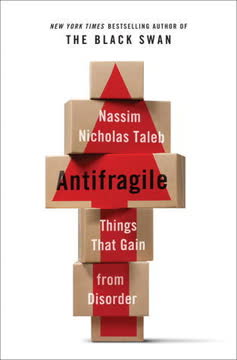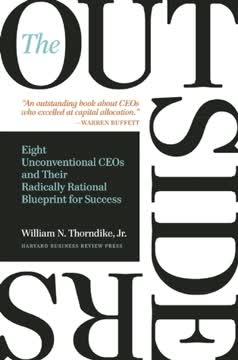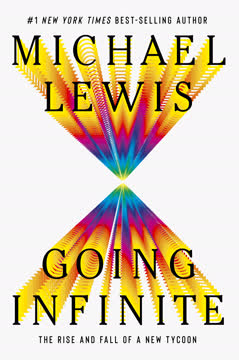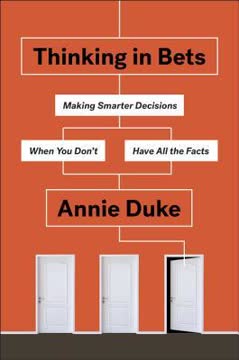Key Takeaways
1. The Herd Mentality Undermines True Differentiation
The more entrenched a system of measurement, the more difficult it is for a deviant, an outlier, or even an experimenter to emerge.
Competitive metrics drive conformity. Businesses, in their quest to measure and improve, often adopt industry-standard metrics. This creates a self-reinforcing cycle where everyone chases the same goals, leading to homogenization rather than differentiation. For example, hospitals focusing solely on mortality rates may avoid complex cases, and universities chasing rankings may stifle pedagogical innovation.
Organic collusion. Companies, like birds in a flock, often move in lockstep without any explicit coordination. This "organic collusion" arises from a shared awareness of competitors and a reactive impulse to match their moves. This is why, in fiercely competitive markets, companies often end up offering similar products and services, despite their best intentions.
The illusion of control. Managers, focused on their own brand, often fail to see the larger pattern of convergence. They are hyper-vigilant about their competitors' moves, but they don't realize that their own actions are contributing to the overall sameness. This is why, despite the best efforts of individual firms, many categories end up looking like a sea of indistinguishable clones.
2. Progress Paradoxically Leads to Sameness
The paradox of progress is that it makes things better, until it makes things worse.
The augmentation trap. Businesses often believe that the way to improve their products is to simply add more features or benefits. This leads to a cycle of "augmentation-by-addition" and "augmentation-by-multiplication," where products become increasingly complex and differentiated in trivial ways. For example, toothpaste now promises fresh breath, tartar control, and whiter smiles, and bottled water brands boast about their unique sources and purification processes.
The hedonic treadmill. As products improve, consumers quickly adapt and recalibrate their expectations. What was once considered a luxury becomes the new normal, leading to a constant cycle of product augmentation that fails to deliver lasting satisfaction. This is why, despite the relentless pursuit of improvement, many categories reach a point of "hyper-maturity" where consumers become indifferent to the differences between brands.
The diminishing returns of differentiation. As categories mature, the differences between products become increasingly incremental and meaningless. This is when product heterogeneity is experienced as product homogeneity. The result is a market where even the most frequent buyers stop believing that comparative diligence is worth the effort.
3. Consumers Cope with Overchoice Through Category Blurring
When the category becomes a blur, we usually retain some general sense of what is happening within that category... but we are hard-pressed to connect specifics to individual brands.
Category-level relationships. In hyper-mature markets, consumers often develop a relationship with the category itself, rather than with individual brands. They may have strong feelings about the airline industry, the fast-food industry, or the car dealership industry, but they are often indifferent to the specific brands within those categories.
Coping mechanisms. Consumers adopt various coping strategies to deal with the overwhelming profusion of options in hyper-mature markets. These strategies include:
- Connoisseurs: Variety seekers who are passionate about the category.
- Opportunists: Bargain hunters who are focused on transactions.
- Pragmatics: Indifferent consumers who make decisions based on habit or convenience.
- Reluctants: Consumers who dread participating in the market.
- Loyalists: Consumers who remain devoted to a particular brand.
The decline of brand loyalty. As categories reach hyper-maturity, the proportion of brand loyalists tends to shrink, while the proportion of brand-agnostic consumers grows. This is because the differences between brands become increasingly trivial, and consumers begin to question the value of comparative diligence.
4. Escaping the Herd Requires a Reversal of Conventional Thinking
A reverse-positioned firm is one that refuses to get on the augmentation treadmill, not because it doesn’t care about its customers, but because it is operating under an inverse assumption.
The power of subtraction. Reverse-positioned brands achieve differentiation by deliberately withholding benefits that consumers have come to expect. This approach challenges the conventional wisdom that more is always better, and it creates a unique value proposition that stands out from the crowd. Examples include Google's minimalist homepage and JetBlue's stripped-down flight experience.
The unexpected extravagance. Reverse brands don't just take away benefits; they also add unexpected elements of extravagance. This creates a unique blend of parsimony and indulgence that appeals to consumers who are tired of the over-augmented offerings of traditional brands. For example, JetBlue offers plush leather seats and personal entertainment systems, while IKEA provides a unique retail experience with its in-store cafes and children's play areas.
The art of the oxymoron. Reverse brands are often described as oxymoronic because they combine seemingly contradictory elements. They are both stingy and indulgent, both basic and sublime. This unexpected combination of attributes creates a brand that is both memorable and compelling.
5. Breakaway Brands Redefine Categories Through Re-Imagination
Breakaway brands say: I know that you’re inclined to think of this as a slice of SWISS CHEESE, but what if you were to think of it as a FLYING CARPET instead?
Challenging category archetypes. Breakaway brands achieve differentiation by deliberately challenging the conventional categories that consumers use to classify products. They offer an alternative frame of reference that allows consumers to experience the product in a new and unexpected way. For example, Sony's AIBO was marketed as a pet rather than a robot, and Kimberly-Clark's Pull-Ups were positioned as big-kid underwear rather than diapers.
The power of recategorization. By recategorizing their products, breakaway brands can change the way consumers think about them and the way they interact with them. This can lead to a shift in consumer behavior and the creation of entirely new markets. For example, Cirque du Soleil redefined the circus by combining elements of theater, dance, and opera.
The invitation to play. Breakaway brands invite consumers to participate in the redefinition of the product. They are transparent about their intentions and they rely on consumers to "buy into" the new category rubric. This creates a sense of shared ownership and a deeper connection to the brand.
6. Hostile Brands Cultivate Loyalty Through Provocation
Hostile brands present us with their product, warts and all, and if we don’t like it, tough.
The art of anti-marketing. Hostile brands reject the conventional wisdom of customer-centric marketing. They don't try to please everyone; instead, they deliberately create barriers to consumption that serve as a test of loyalty. Examples include In-N-Out Burger's limited menu and A Bathing Ape's difficult-to-find stores.
The power of polarization. Hostile brands thrive on creating divisions among consumers. They are not afraid to alienate some customers in order to cultivate a passionate following among others. This approach creates a strong sense of identity and belonging among those who embrace the brand.
The allure of the difficult. Hostile brands often make ownership effortful. They may be difficult to find, difficult to purchase, or difficult to use. This creates a sense of exclusivity and makes the act of consumption more meaningful. The result is a brand that is not just a product, but a statement.
7. Meaningful Difference Requires a Rejection of the Status Quo
When we are too cautious about the things we are willing to offer, we strip our discourse of any possibility of counter-intuition, of discovery and of surprise.
Beyond incrementalism. True differentiation requires a rejection of the incremental improvements that dominate most product marketing. It requires a willingness to challenge the status quo and to explore unconventional approaches. This is why, in order to be different, you have to be willing to be a little bit crazy.
The importance of conceptual innovation. Differentiation is not just about adding new features or benefits; it's about rethinking the entire value proposition. This requires a commitment to conceptual innovation, to generating new ideas that challenge the conventional wisdom of the category.
The courage to be lopsided. True differentiation is rarely a function of well-roundedness; it is typically a function of lopsidedness. This means that companies must be willing to embrace their strengths and to accept their weaknesses. They must be willing to be different, even if it means being a little bit unbalanced.
8. The Power of Conceptual Innovation Over Incrementalism
What I try to do instead is look for the most interesting 2 percent I can find, and then provide a perspective on it that people aren’t going to get anywhere else.
Beyond the obvious. Conceptual innovation involves looking beyond the obvious and exploring unconventional approaches to product development and marketing. It requires a willingness to challenge the status quo and to think outside the box. This is why, in order to be different, you have to be willing to be a little bit crazy.
The limitations of market research. Formal market research can be useful for identifying areas for improvement, but it is often inadequate for generating truly innovative ideas. This is because consumers are often unable to articulate their unmet needs or to imagine possibilities that lie beyond their current experience.
The need for a different lens. To generate truly innovative ideas, businesses must be willing to look at the world through a different lens. They must be willing to challenge their assumptions and to explore unconventional approaches. This requires a commitment to creativity and a willingness to take risks.
9. The Fragility of New Ideas and the Need for Nurturing
Great ideas, novel ideas, original ideas … are extremely fragile at birth.
The danger of premature judgment. New ideas, especially those that challenge conventional wisdom, are often met with skepticism and criticism. This is why it is important to create an environment where new ideas can be nurtured and developed without being prematurely judged.
The power of positive feedback. When brainstorming new ideas, it is important to focus on the positive aspects of each proposal, rather than immediately pointing out its flaws. This approach can help to create a more open and creative environment where new ideas can flourish.
The need for a safe space. To encourage innovation, businesses must create a safe space where employees feel comfortable sharing their unconventional ideas without fear of ridicule or rejection. This requires a culture that values experimentation and that is willing to tolerate failure.
10. The Importance of Human Insight Over Data Obsession
If we only pay attention to things that we can measure, we will only pay attention to the things that are easily measurable.
Beyond the numbers. While data is important, it is not the only source of insight. Businesses must also be willing to rely on their intuition, their empathy, and their understanding of human behavior. This requires a commitment to qualitative research and a willingness to listen to the stories of their customers.
The limitations of empiricism. An over-reliance on data can lead to a narrow and reductionist view of the world. It can cause businesses to focus on the measurable at the expense of the meaningful. This is why it is important to balance data with human insight.
The human touch. In an increasingly data-driven world, the human touch is more important than ever. Businesses must be willing to connect with their customers on a personal level and to understand their needs and desires. This requires a commitment to empathy and a willingness to see the world through the eyes of others.
Last updated:
FAQ
What's "Different: Escaping the Competitive Herd" about?
- Exploration of Differentiation: The book explores how businesses can differentiate themselves in a crowded market by breaking away from conventional competitive strategies.
- Critique of Competition: It critiques the current state of competition, where companies often end up offering similar products and services, leading to a lack of true differentiation.
- Focus on Idea Brands: Youngme Moon highlights brands that have successfully stood out by being different, such as Google and IKEA, and examines their strategies.
- Conceptual Innovation: The book emphasizes the importance of conceptual innovation over mere product augmentation to achieve meaningful differentiation.
Why should I read "Different: Escaping the Competitive Herd"?
- Insightful Analysis: The book provides a deep analysis of how businesses can escape the trap of competitive conformity and truly stand out.
- Practical Examples: It offers real-world examples of brands that have successfully differentiated themselves, providing practical insights for business leaders.
- Challenging Conventional Wisdom: Youngme Moon challenges traditional business practices and encourages readers to think differently about competition and differentiation.
- Engaging Writing Style: The book is written in an engaging and thought-provoking manner, making complex business concepts accessible and interesting.
What are the key takeaways of "Different: Escaping the Competitive Herd"?
- Avoid Competitive Herding: Businesses should avoid following the herd and instead focus on creating unique value propositions.
- Embrace Conceptual Innovation: Differentiation should come from innovative ideas rather than just adding more features to products.
- Understand Consumer Behavior: Recognizing the changing dynamics of consumer behavior is crucial for creating brands that resonate with people.
- Value of Simplicity: Sometimes, offering less can be more effective, as seen with brands like Google that focus on simplicity and clarity.
How does Youngme Moon define "Reverse-Positioned Brands"?
- Defy Augmentation Trends: Reverse-positioned brands deliberately defy the trend of adding more features and benefits, focusing instead on simplicity.
- Unexpected Extravagance: These brands offer unexpected forms of extravagance, creating a unique value proposition that stands out.
- Example of Google: Google is highlighted as a reverse-positioned brand with its simple, uncluttered homepage that contrasts with feature-heavy competitors.
- Consumer Appeal: By stripping down to essentials and adding unique touches, these brands appeal to consumers looking for something different.
What is a "Breakaway Brand" according to Youngme Moon?
- Redefine Categories: Breakaway brands redefine existing product categories by offering a new frame of reference, challenging traditional definitions.
- Example of AIBO: Sony's AIBO is presented as a breakaway brand, marketed as a pet rather than a robot, altering consumer expectations.
- Transformative Devices: These brands act as transformative devices, encouraging consumers to engage with products in new ways.
- Challenge Stereotypes: Breakaway brands challenge category stereotypes, forcing consumers to reconsider their preconceived notions.
How does "Different: Escaping the Competitive Herd" address "Hostile Brands"?
- Play Hard to Get: Hostile brands create barriers to consumption, making it a challenge for consumers to engage with them.
- Polarizing Nature: These brands are polarizing, attracting passionate followers while also repelling others, creating a strong brand identity.
- Example of MINI Cooper: The MINI Cooper is cited as a hostile brand that embraces its small size, challenging the big-car culture.
- Cultural Relevance: Hostile brands thrive on cultural relevance, using their divisive nature to create a strong, loyal customer base.
What role does "Consumer Behavior" play in "Different: Escaping the Competitive Herd"?
- Understanding Dynamics: The book emphasizes the importance of understanding the changing dynamics of consumer behavior for effective differentiation.
- Category Stereotypes: It discusses how entrenched category stereotypes influence consumer perceptions and how brands can challenge these.
- Consumer Engagement: Successful brands engage consumers by offering something unexpected, breaking away from traditional expectations.
- Emotional Resonance: Creating emotional resonance with consumers is key to building strong, differentiated brands.
What are some of the best quotes from "Different: Escaping the Competitive Herd" and what do they mean?
- "Jaded is the new stoned." This quote highlights the modern consumer's tendency to be unimpressed by traditional marketing tactics, emphasizing the need for brands to offer something truly different.
- "Innovation can operate through a process of subtraction." It suggests that sometimes, removing features or simplifying a product can lead to greater differentiation and consumer appeal.
- "Difference is deviance." This quote underscores the idea that true differentiation often involves breaking away from norms and embracing unconventional strategies.
- "Differentiation is a way of thinking." It emphasizes that differentiation is not just a tactic but a mindset that should permeate all aspects of a business.
How does Youngme Moon suggest businesses can achieve "Conceptual Innovation"?
- Think Beyond Augmentation: Businesses should move beyond simply adding features and focus on creating fundamentally new ideas.
- Challenge Assumptions: Questioning existing assumptions and norms can lead to breakthrough innovations that redefine categories.
- Embrace Uncertainty: Being open to uncertainty and willing to experiment with unconventional ideas is crucial for conceptual innovation.
- Focus on Consumer Experience: Understanding and enhancing the consumer experience can lead to innovative solutions that resonate with people.
What is the "Paradox of Progress" as discussed in "Different: Escaping the Competitive Herd"?
- Progress vs. Familiarity: The paradox lies in the tension between the desire for progress and the comfort of familiarity, which can lead to consumer disillusionment.
- Over-Saturation: As products become more feature-rich, consumers may become overwhelmed, leading to a desire for simplicity and clarity.
- Innovation Fatigue: Continuous innovation can lead to fatigue, where consumers become indifferent to new features and crave stability.
- Balancing Act: Businesses must balance the need for progress with the need to maintain a sense of familiarity and comfort for consumers.
How does "Different: Escaping the Competitive Herd" redefine "Marketing Myopia"?
- Beyond Product Focus: The book redefines marketing myopia by emphasizing the need to look beyond product features and focus on consumer experiences.
- Consumer-Centric Approach: It advocates for a consumer-centric approach that prioritizes understanding and meeting consumer needs in innovative ways.
- Avoiding Conformity: Businesses should avoid conforming to industry norms and instead focus on creating unique value propositions that stand out.
- Long-Term Vision: A long-term vision that prioritizes differentiation and innovation is essential for overcoming marketing myopia.
What are the implications of "Different: Escaping the Competitive Herd" for future business strategies?
- Embrace Difference: Future business strategies should embrace difference and focus on creating unique, meaningful value propositions.
- Innovative Thinking: Encouraging innovative thinking and challenging conventional wisdom will be crucial for staying competitive.
- Consumer Engagement: Engaging consumers in new and unexpected ways will be key to building strong, differentiated brands.
- Adaptability: Businesses must remain adaptable and open to change, continuously seeking new ways to stand out in a crowded market.
Review Summary
Different receives mixed reviews, with praise for its insights on brand differentiation and criticism of its length and structure. Readers appreciate Moon's analysis of successful brands that stand out through reverse positioning, breakaway strategies, or hostile approaches. Many find the examples and writing style engaging. However, some feel the book could be condensed and lacks concrete guidance. Overall, it's seen as thought-provoking for marketers and business leaders, offering a fresh perspective on competitive differentiation, though not without flaws.
Similar Books








Download PDF
Download EPUB
.epub digital book format is ideal for reading ebooks on phones, tablets, and e-readers.




